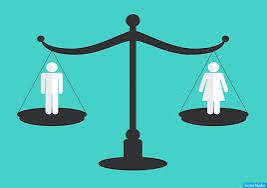Gender discrimination in Afghanistan

Gender discrimination in Afghanistan is one of the major social and cultural problems of this country, which manifests itself in various ways in the daily life of women and girls. Some of the most important aspects of gender discrimination in Afghanistan are:
-
Access to education: Girls in many regions of Afghanistan face serious limitations in access to education. The Taliban and other conservative groups often close girls’ schools or impose restrictions on girls’ education.
-
Job restrictions: Afghan women face many restrictions in the labor market. Many jobs and career opportunities are inaccessible to women and discrimination in the workplace is also common.
-
Legal and judicial rights: Women face discrimination in Afghanistan’s judicial system. Laws related to family rights and inheritance are also set in favor of men and put women in weaker positions.
-
Violence and harassment: Violence against women, including domestic violence, forced and underage marriages, and sexual and physical harassment, is very common in Afghanistan. Women often do not have enough legal and social protection.
-
Social and cultural limitations: Traditional roles and gender stereotypes limit women to domestic duties and limit their participation in social and public activities.
-
Health and Health: Access to health services for women is very limited, especially in rural areas. Health care related to pregnancy and childbirth is also often inadequate.

These discriminations make Afghan women and girls unable to fully benefit from their rights and opportunities and face serious challenges and limitations in many fields. Efforts to improve the status of women in Afghanistan require fundamental changes in laws, culture and social structures.

Gender discrimination in Afghanistan
Gender discrimination in Afghanistan is one of the major social and cultural problems of this country, which manifests itself in various ways in the daily life of women and girls. Some of the most important aspects of gender discrimination in Afghanistan are:
-
Access to education: Girls in many regions of Afghanistan face serious limitations in access to education. The Taliban and other conservative groups often close girls’ schools or impose restrictions on girls’ education.
-
Job restrictions: Afghan women face many restrictions in the labor market. Many jobs and career opportunities are inaccessible to women and discrimination in the workplace is also common.
-
Legal and judicial rights: Women face discrimination in Afghanistan’s judicial system. Laws related to family rights and inheritance are also set in favor of men and put women in weaker positions.
-
Violence and harassment: Violence against women, including domestic violence, forced and underage marriages, and sexual and physical harassment, is very common in Afghanistan. Women often do not have enough legal and social protection.
-
Social and cultural limitations: Traditional roles and gender stereotypes limit women to domestic duties and limit their participation in social and public activities.
-
Health and Health: Access to health services for women is very limited, especially in rural areas. Health care related to pregnancy and childbirth is also often inadequate.
These discriminations make Afghan women and girls unable to fully benefit from their rights and opportunities and face serious challenges and limitations in many fields. Efforts to improve the status of women in Afghanistan require fundamental changes in laws, culture and social structures.
